
The Pontiac Firebird is a tale of one of the most iconic American muscle cars or pony cars. It debuted in 1967 and quickly gained a reputation for power, performance, and style.
Let’s delve into the history and evolution of the Firebird from 1967 to 1974, focusing on the V8 engine options and their performance.
From the introduction of the Trans Am to the end of this golden era of muscle cars, join us as we explore the legacy of the Pontiac Firebird.
But first, here are some highlights:
Table of Contents
Pontiac Firebird Highlights
| Introduced in 1967 as a pony car to compete with the Ford Mustang and Chevrolet Camaro. |
| The convertible body style was available only from 1967 to 1969. |
| The Trans Am model was introduced in 1969, enhancing the Firebird’s performance image. |
| Formula Firebird was introduced in 1970 as a performance-oriented model between the base Firebird and Trans Am. |
| A range of V8 engines was offered throughout 1967-1974, including the 400 CI, 400 CI Ram Air IV, and the powerful 455 CI Super Duty. |
| Discontinuation of the convertible option from 1970 onwards. |
| Production numbers varied yearly, with some models (such as the 1969 Trans Am Convertible) being particularly rare and sought-after by collectors. |
| The V8 engine options and performance-oriented models like the Formula and Trans Am demonstrate Pontiac’s focus on performance and power. |
| Notable racing success in the Trans Am Series, particularly with the Trans Am model in the late 1960s and early 1970s. |
The Evolution of the Pontiac Firebird
The Pontiac Firebird was introduced in 1967 as a pony car designed to compete with the Ford Mustang and Chevrolet Camaro. It was built on the F-body platform, which it shared with the Camaro.
The Firebird was available in various configurations, including coupes and convertibles, with several V8 engine options that offered varying levels of power and performance.
The most iconic and high-performance variant of the Firebird was the Trans Am, introduced in 1969, which came to represent the pinnacle of performance and styling for the Firebird line.
Let’s look at the Firebird and Trans Am during the Muscle Car era, shall we?
1967 Firebird
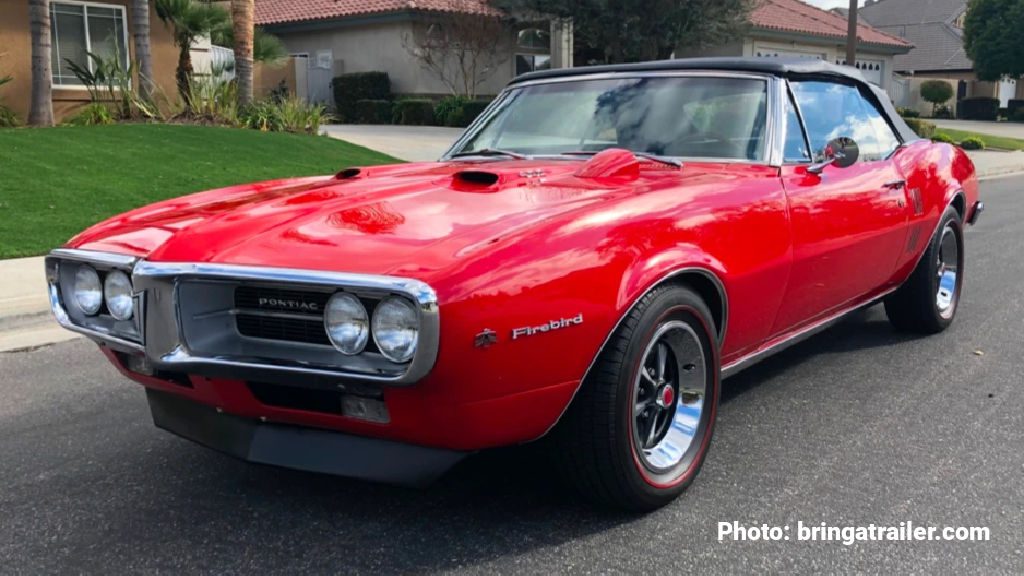
The 1967 Firebird marked the beginning of an era for Pontiac, featuring a distinctive Coke bottle styling that set it apart from its competitors. It was offered in five different models: the base Firebird, Firebird Sprint, Firebird 326, Firebird H.O. (High Output), and the Firebird 400. Engine options ranged from a 230-cubic-inch inline-six to a 400-cubic-inch V8.
The Firebird 326 and H.O. models were powered by 326-cubic-inch V8 engines, with the H.O. receiving a higher-performance version. The top-of-the-line Firebird 400 featured a 400-cubic-inch V8 engine and was available with either a three-speed automatic or a four-speed manual transmission.
Car Life magazine (June 1967) tested a Firebird 326 with an automatic transmission, achieving a quarter-mile time of 16.1 seconds at 88 mph. The Firebird 400 was tested by Motor Trend (June 1967), which clocked a quarter-mile time of 14.7 seconds at 98.2 mph.
Pontiac manufactured a total of 82,560 Firebird units in 1967, with 15,528 of them being convertible models.
- Body Length: 188.8 inches
- Wheelbase: 108.1 inches
- Curb Weight: Approximately 3,000 lbs
- Number Built: 82,560
- Base Price: $2,666
Production Figures
| Model | Body Style | Production Numbers |
|---|---|---|
| Firebird | Coupe | 67,032 |
| Firebird | Convertible | 15,528 |
| Firebird 400 | Coupe | 18,632 |
| Firebird 400 | Convertible | 3,784 |
| Total | 82,560 |
1968 Firebird
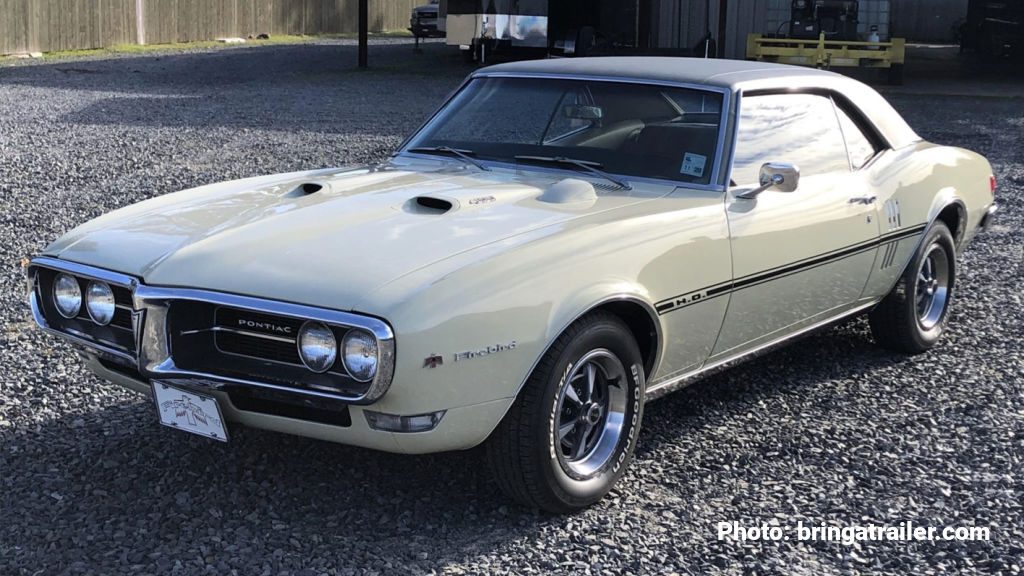
The 1968 Firebird saw several design changes, most notably introducing a new federally mandated energy-absorbing steering column and a redesigned front end with a one-piece bumper and grille assembly. The Firebird 400 received a new hood design with dual scoops, while the base model and the Sprint retained the single-scoop hood.
Engine options remained largely the same, with the introduction of a new 350-cubic-inch V8 for the Firebird 350 model, which replaced the Firebird 326. The 350 V8 produced 265 horsepower and 355 lb-ft of torque, while the 400 V8 remained unchanged. Hot Rod magazine (July 1968) tested a Firebird 350 with an automatic transmission, clocking a quarter-mile time of 16.0 seconds at 87 mph. The Firebird 400, tested by Car and Driver (May 1968), managed a quarter-mile time of 14.5 seconds at 100 mph.
In 1968, production numbers for the Firebird rose to 90,152 units, with the base model and Firebird 350 making up the majority of sales. Out of these, 16,960 were Firebird convertibles. The first-generation Firebird continued to evolve, with each model year introducing new features and performance improvements.
- Body Length: 188.8 inches
- Wheelbase: 108.1 inches
- Curb Weight: Approximately 3,100 lbs
- Number Built: 107,112
- Base Price: $2,785
Production Figures
| Model | Body Style | Production Numbers |
|---|---|---|
| Firebird | Coupe | 90,152 |
| Firebird | Convertible | 16,960 |
| Firebird 400 | Coupe & Convertible | 8,714 |
| Total | 107,112 |
1969 Firebird
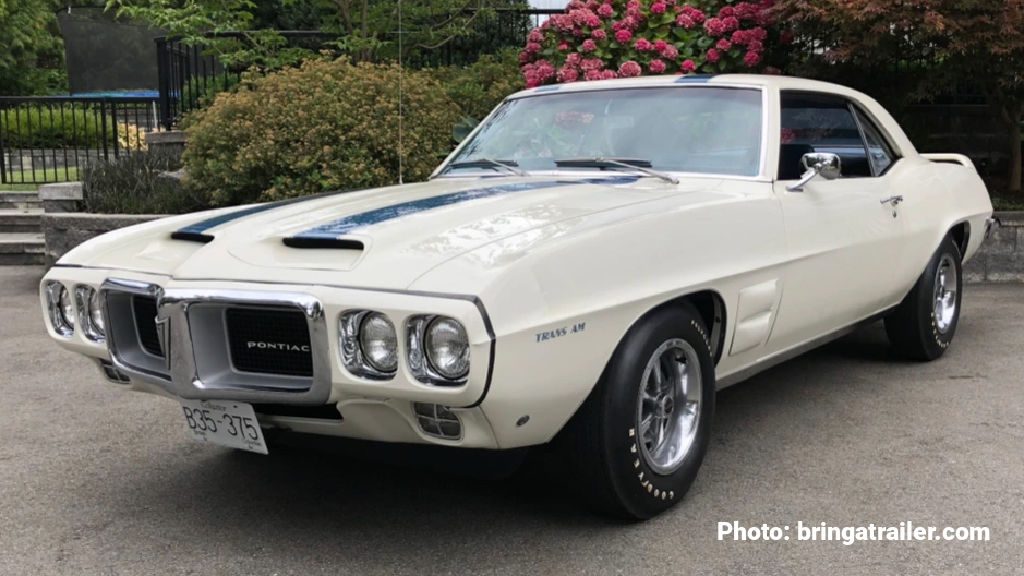
The 1969 Firebird saw significant changes, including a redesigned front end with a new split grille and quad headlamps. The rear end was also updated, featuring new taillights and a redesigned bumper. The most notable introduction in 1969 was the high-performance Trans Am model, named after the Trans-American racing series. Limited to just 697 units, the Trans Am featured a 400-cubic-inch V8 engine with Ram Air III or Ram Air IV options, functional hood scoops, and a distinctive white and blue paint scheme with twin stripes running along the length of the car.
Engine options for the 1969 Firebird were expanded, with the base model now featuring a 230-cubic-inch inline-six or a 250-cubic-inch overhead-cam inline-six. The Firebird 350 and 400 models continued to offer the same V8 engines as the previous year, with the Ram Air III and Ram Air IV options available for the Firebird 400 and Trans Am. Car and Driver (July 1969) tested a Trans Am equipped with the Ram Air IV engine, recording a quarter-mile time of 14.1 seconds at 101.5 mph.
In 1969, the total production of Firebirds reached 87,011 units. Introducing the Trans Am contributed to the car’s performance image and boosted demand.
This was the last year of the convertible body style during this time period.
- Body Length: 191.6 inches
- Wheelbase: 108.1 inches
- Curb Weight: Approximately 3,200 lbs
- Number Built: 87,011
- Base Price: $2,831
Production Figures
| Model | Body Style | Production Numbers |
|---|---|---|
| Firebird | Coupe | 74,673 |
| Firebird | Convertible | 11,641 |
| Firebird 400 | Coupe & Convertible | 11,522 |
| Trans Am | Coupe | 689 |
| Trans Am | Convertible | 8 |
| Total | 87,011 |
1970 Firebird
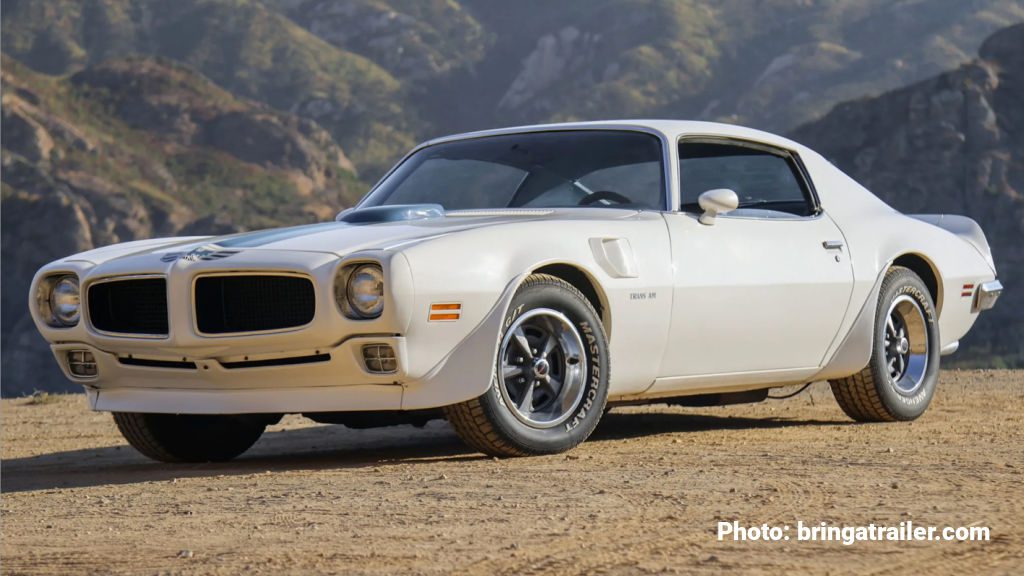
The 1970 Firebird began the second-generation models, featuring an entirely new design with a more aggressive stance and sleeker lines. The front end was redesigned with a new Endura bumper, while the rear featured a new wrap-around glass design. The Trans Am also saw significant updates, including a new Shaker hood scoop and a redesigned rear spoiler.
Engine options for the 1970 Firebird included a new 250-cubic-inch overhead-cam inline-six for the base model, a 350-cubic-inch V8 for the Firebird Esprit, and a 400-cubic-inch V8 for the Firebird Formula and Trans Am. The Ram Air III and Ram Air IV options were still available, and a powerful 455 H.O. option was introduced, available for the Firebird Formula and Trans Am. Hot Rod magazine (March 1970) tested a Trans Am equipped with the Ram Air IV engine, posting a quarter-mile time of 13.9 seconds at 104 mph.
Production numbers for the 1970 Firebird were lower than in previous years, totaling 48,739 units. All coupe models. This was partly due to a shortened production year due to labor strikes at General Motors.
- Body Length: 191.0 inches
- Wheelbase: 108.0 inches
- Curb Weight: Approximately 3,400 lbs
- Number Built: 48,739
- Base Price: $2,875
Production Figures
| Model | Body Style | Production Numbers |
|---|---|---|
| Firebird | Coupe | 26,854 |
| Formula | Coupe | 7,708 |
| Trans Am | Coupe | 3,196 |
| Esprit | Coupe | 18,961 |
| Total | 48,739 |
1971 Firebird
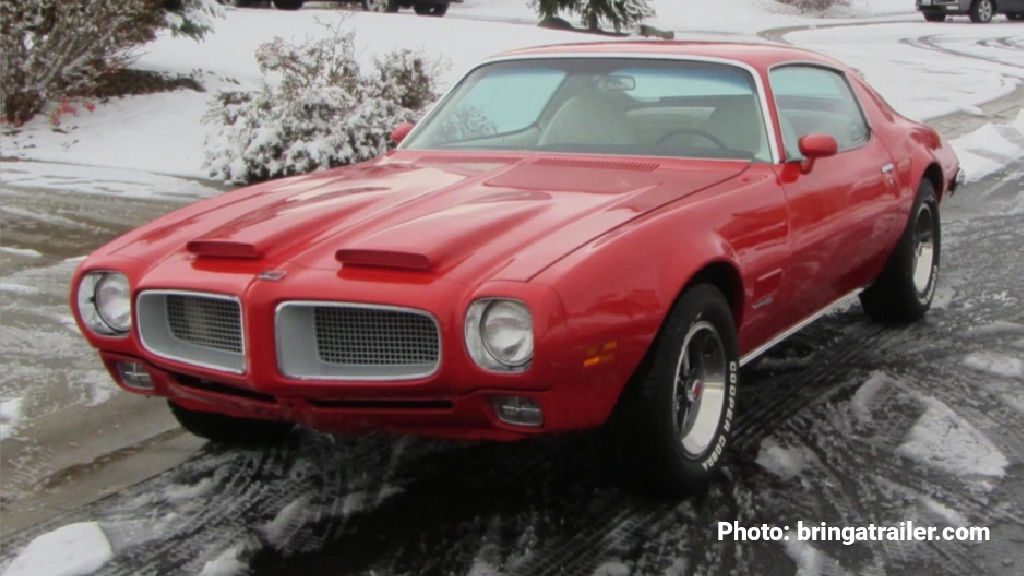
The 1971 Firebird underwent a few changes, mostly limited to adding fender vents exclusive to that year, bucket seats with collars in the deluxe interior, and removing headrests. Honeycomb wheels became an option for all Firebird models. The available engine choices remained unchanged from the previous year, except for adding the 455 H.O. engine, specifically introduced for the Trans Am model.
Production numbers for the 1971 Firebird increased slightly to 53,124 units. All coupe models. The car continued to gain traction in the market, but looming federal regulations and an oil crisis would soon impact the performance of American muscle cars.
- Body Length: 191.0 inches
- Wheelbase: 108.0 inches
- Curb Weight: Approximately 3,400 lbs
- Number Built: 53,124
- Base Price: $3,017
Production Figures
| Model | Body Style | Production Numbers |
|---|---|---|
| Firebird | Coupe | 23,021 |
| Formula | Coupe | 7,802 |
| Trans Am | Coupe | 2,116 |
| Esprit | Coupe | 20,185 |
| Total | 53,124 |
1972 Firebird
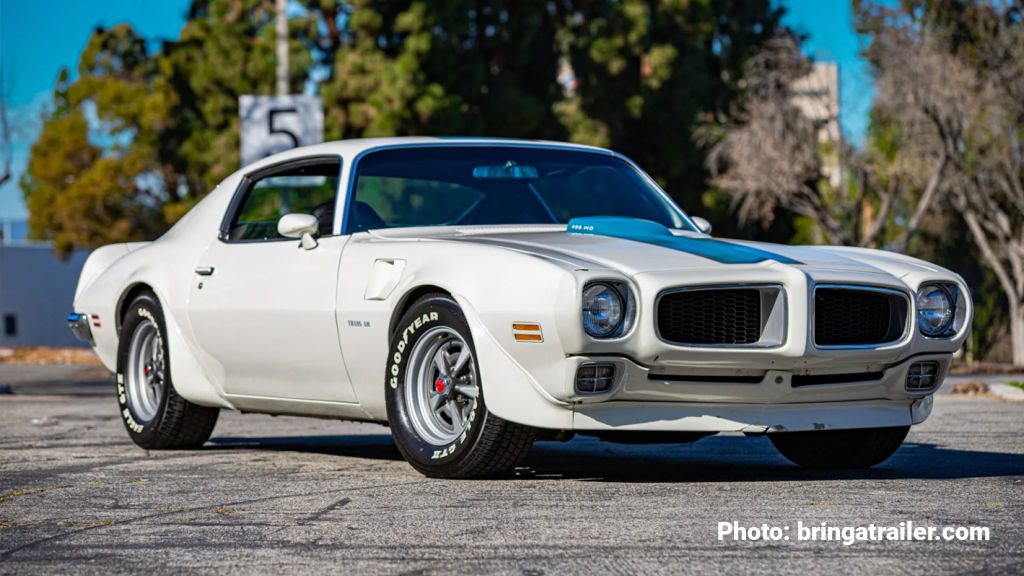
The 1972 Firebird received a new hexagonal honeycomb grille design and revised taillights. However, the most significant change was under the hood, as new emissions regulations decreased horsepower for all engines. The base model now featured a 250-cubic-inch overhead-cam inline-six, while the Firebird Esprit and Formula offered a 350-cubic-inch V8 and a 400-cubic-inch V8, respectively. The LS5 455 was dropped from production. The Trans Am continued to offer the 455 H.O. engine, though its horsepower was also reduced to 300 ponies.
Production numbers for the 1972 model were affected by a strike at the Norwood assembly plant, resulting in just 29,951 units being produced. All coupe models. Despite the challenges, the Firebird and Trans Am models became popular among enthusiasts.
- Body Length: 191.0 inches
- Wheelbase: 108.0 inches
- Curb Weight: Approximately 3,400 lbs
- Number Built: 29,951
- Base Price: $3,082
Production Figures
| Model | Body Style | Production Numbers |
|---|---|---|
| Firebird | Coupe | 12,000 |
| Formula | Coupe | 5,250 |
| Trans Am | Coupe | 1,286 |
| Esprit | Coupe | 11,415 |
| Total | 29,951 |
1973 Firebird
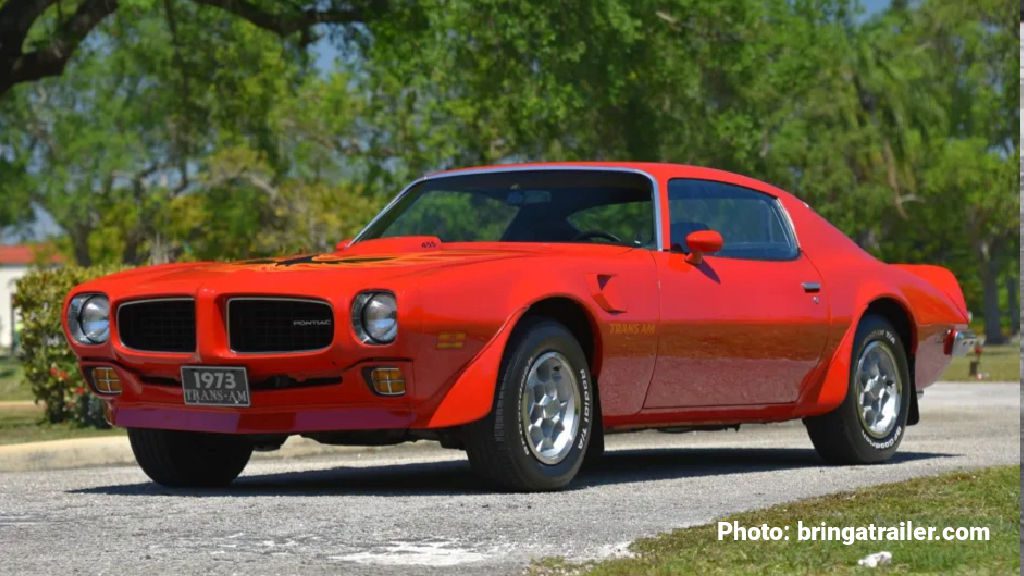
The 1973 Firebird featured updated front and rear bumper designs, complying with new federal bumper regulations. The Trans Am received a new “screaming chicken” hood decal, which would become an iconic feature of the model.
Engine options remained largely the same as the previous year, with the base model featuring a 250-cubic-inch inline-six, the Firebird Esprit offering a 350-cubic-inch V8, and the Firebird Formula providing a 400-cubic-inch V8. The Trans Am introduced the 455 Super Duty engine, which was more powerful than the 455 H.O. engine and became the most powerful option available.
Car Craft magazine (July 1973) tested a Trans Am equipped with the 455 Super Duty engine, achieving a quarter-mile time of 13.54 seconds at 104.29 mph. This impressive performance helped solidify the Trans Am’s reputation as a formidable muscle car, despite the challenges faced by the industry during this time.
Production numbers for the 1973 Firebird rebounded to 46,313 units, with the Trans Am accounting for 4,802 of those. All were coupe models.
- Body Length: 193.8 inches
- Wheelbase: 108.0 inches
- Curb Weight: Approximately 3,600 lbs
- Number Built: 46,313
- Base Price: $3,128
Production Figures
| Model | Body Style | Production Numbers |
|---|---|---|
| Firebird | Coupe | 14,096 |
| Formula | Coupe | 10,166 |
| Trans Am | Coupe | 4,802 |
| Esprit | Coupe | 17,249 |
| Total | 46,313 |
1974 Firebird
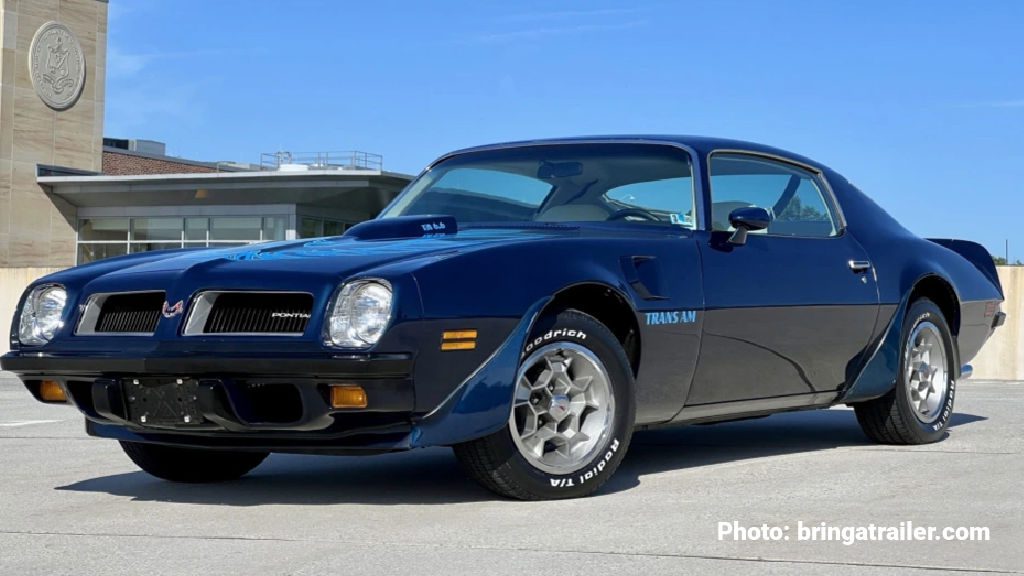
The 1974 Firebird saw another round of design changes, including a new front fascia with larger, rectangular headlamps and a new rear bumper that fully integrated the taillights. The Trans Am received a new “Super Duty” hood decal, further differentiating it from the standard Firebird models.
Engine options in 1974 were affected by the ongoing oil crisis and tightening emissions regulations. The base model now featured a 250-cubic-inch inline-six or a 350-cubic-inch V8, while the Firebird Esprit and Formula offered a 350-cubic-inch V8 and a 400-cubic-inch V8, respectively. The Trans Am continued to offer the 455 Super Duty, though its horsepower rating had been further reduced. Only 943 SD-455s were produced in 1974.
Despite these challenges, the 1974 Firebird remained popular among muscle car enthusiasts. Production numbers for the year totaled 73,729 units, with the Trans Am accounting for 10,255 of those. All coupe models.
- Body Length: 193.8 inches
- Wheelbase: 108.0 inches
- Curb Weight: Approximately 3,600 lbs
- Number Built: 73,729
- Base Price: $3,359
Production Figures
| Model | Body Style | Production Numbers |
|---|---|---|
| Firebird | Coupe | 26,372 |
| Formula | Coupe | 14,519 |
| Trans Am | Coupe | 10,255 |
| Esprit | Coupe | 22,583 |
| Total | 73,729 |
1975 and Beyond
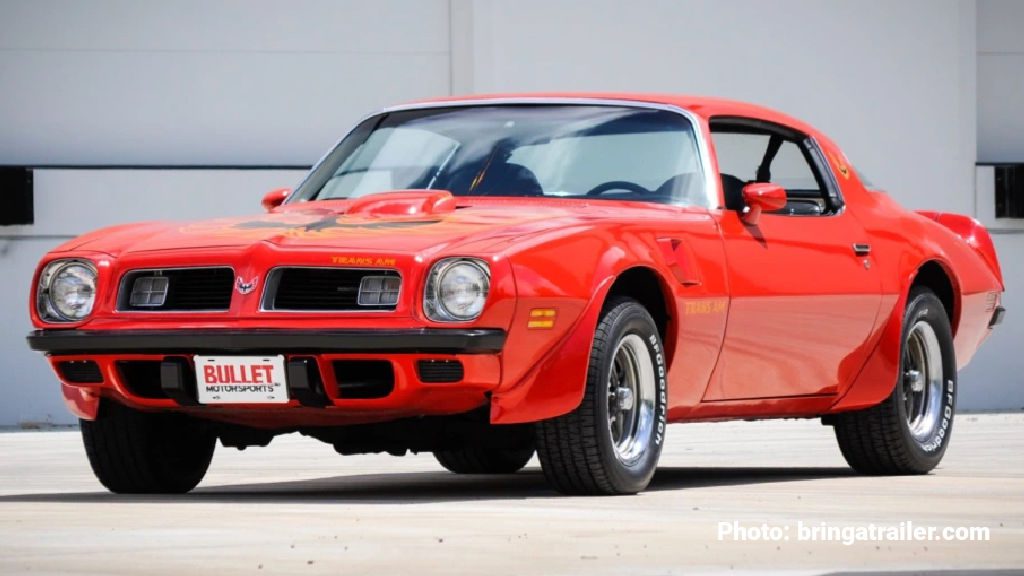
The Firebird experienced numerous transformations from 1975 to 2002, adapting to the changing automotive landscape. With four generations of the Firebird, each era introduced new designs, performance upgrades, and special editions that captured the hearts of car enthusiasts. The following key highlights showcase the most notable milestones in the Firebird’s evolution, solidifying its status as a classic and beloved part of automotive history.
| Year | Key Highlights |
|---|---|
| 1975 | Due to emissions regulations, redesigned front fascia with rectangular headlights and detuned engines. |
| 1980 | Introduction of Turbo Trans Am with a turbocharged 301-cubic-inch V8 engine and restyled front fascia. |
| 1982 | Launch of the third generation, featuring a sleek, aerodynamic design and introduction of fuel injection technology. |
| 1989 | Introduction of the 20th Anniversary Trans Am with a turbocharged 3.8-liter V6 engine, limited production. |
| 1993 | Fourth generation debut, with a complete redesign, aggressive appearance, and updated engines. |
| 1998 | LS1 V8 engine was introduced in the Trans Am, improving performance and efficiency. |
| 2002 | Firebird production ends with releasing the 35th Anniversary Edition and the Collector Edition Trans Am. |
Conclusion
The Pontiac Firebird, particularly during 1967-1974, represented a golden age for American muscle cars. With a range of powerful V8 engines, aggressive styling, and impressive performance, the Firebird and its high-performance sibling, the Trans Am, captured the imagination of a generation. Although the muscle car era would soon come to an end due to the oil crisis and tightening emissions regulations, the Firebird’s legacy as an iconic American muscle car remains firmly etched in automotive history.
Related Questions
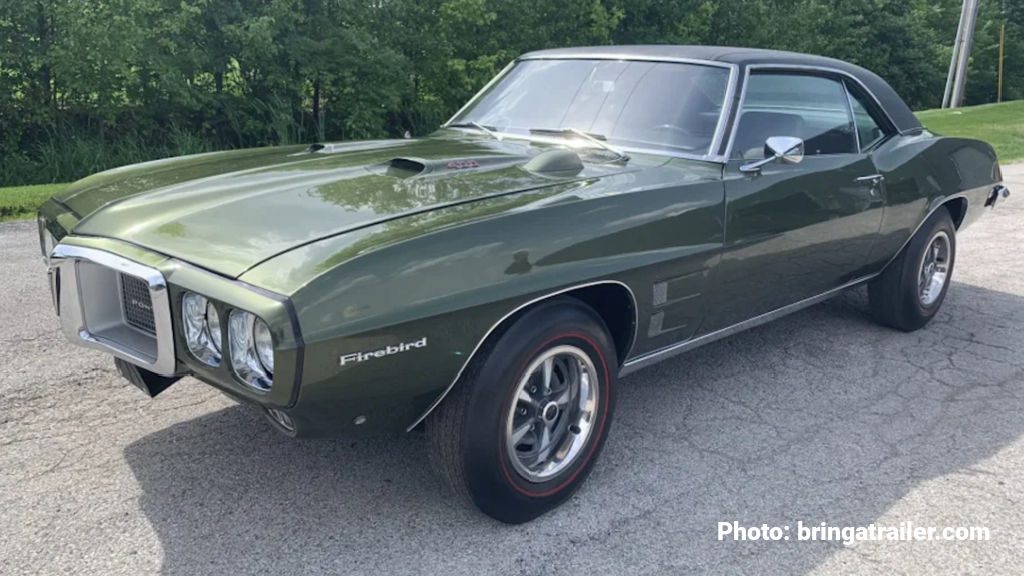
The first year of the Pontiac Firebird was 1967. The car debuted as a competitor to the Ford Mustang and Plymouth Barracuda and shared the same platform as the Chevrolet Camaro.
The Pontiac Firebird is an iconic American muscle car produced by General Motors’ Pontiac division from 1967 to 2002. The Firebird underwent four generations during its 35-year production run, offering various body styles, including coupes and convertibles, and a range of powerful engine options, ranging from 326 HO to 455 HO. The high-performance Trans Am variant, named after the Trans-American racing series, became particularly popular among enthusiasts for its distinctive styling and impressive performance.
The first year of the Pontiac Trans Am was 1969. Introduced as a high-performance version of the Firebird, the Trans Am featured a distinctive white and blue paint scheme with twin stripes, a Ram Air III 400-cubic-inch V8 engine, and other performance-enhancing modifications.
The Pontiac Firebird and the GTO are two different models produced by General Motors’ Pontiac division, each with its distinct characteristics and target audiences. The Pontiac Firebird is a pony car, while the GTO is a muscle car. The GTO is larger and more focused on straight-line performance than the Firebird. The Firebird shares its platform (the F-body) with the Chevrolet Camaro. In contrast, the Pontiac GTO is based on the A-body platform, shared with other GM models such as the Chevrolet Chevelle, Oldsmobile Cutlass, and Buick Skylark.
Take Our Poll!
"*" indicates required fields
Ryan
Ryan has owned muscle cars since 1986 and currently owns a 1972 Dodge Charger Rallye. He combines passion and experience to create engaging content for fellow muscle car enthusiasts. In 2018, he founded Muscle Cars Illustrated, authoring hundreds of articles on tips, history, and trends in the muscle car industry. He attends national car shows, auctions, and museums to stay current with the latest developments in the muscle car industry.Comments
Comments are closed.

I’ve had 67 birds 455 4spd and I have a 79 Trans 403 orig paint and interior and a 93 TA with 44k 6spd.They are all great but the 69 is so fine. No matter what a white with blue stripe 69 Trans am is hands down the original muscle Trans am!